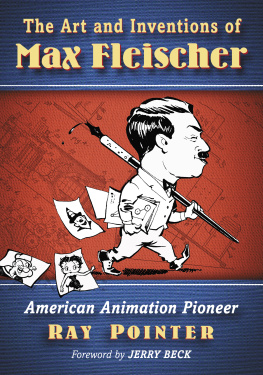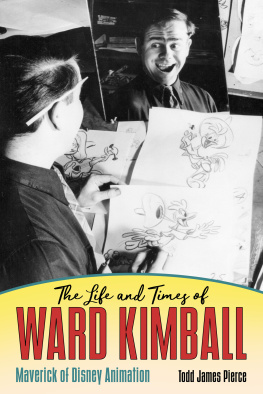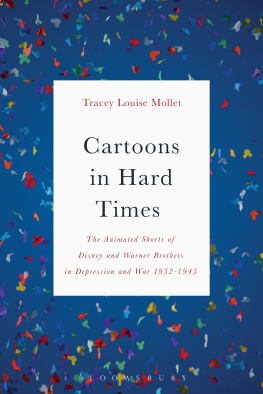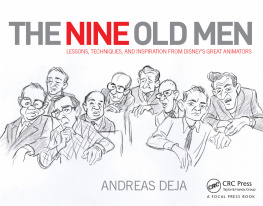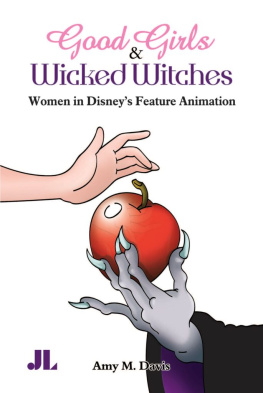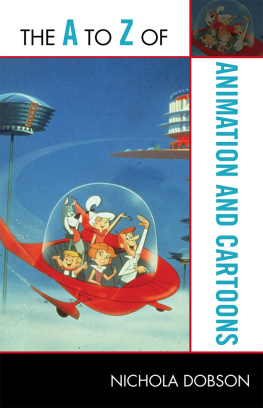
The Art and Inventions of Max Fleischer
American Animation Pioneer
RAY POINTER
Foreword by Jerry Beck

McFarland & Company, Inc., Publishers
Jefferson, North Carolina
LIBRARY OF CONGRESS CATALOGUING DATA ARE AVAILABLE
BRITISH LIBRARY CATALOGUING DATA ARE AVAILABLE
e-ISBN: 978-1-4766-2741-0
2017 Ray Pointer. All rights reserved
No part of this book may be reproduced or transmitted in any form or by any means, electronic or mechanical, including photocopying or recording, or by any information storage and retrieval system, without permission in writing from the publisher.
Front cover illustration by Dick Huemer, digital composite by Shi Briggs
McFarland & Company, Inc., Publishers
Box 611, Jefferson, North Carolina 28640
www.mcfarlandpub.com
Dedicated to all Fleischer fans
past, present, and future.
Acknowledgments
The following individuals generously shared their time, recollections, and personal affects over the years, without which this book would have been incomplete.
Joe Adamson, Ford Banes, Michael Barrier, Jerry Beck, John Canemaker, Harvey Deneroff, Gene Deitch, Ryan Englade, Beatrice Fleischer-Stone, Bernard Fleischer, Bernie Fleischer, Joe Fleischer, Mark Fleischer, Richard Fleischer, Seymour Fleischer, Campbell Ford, Eric Goldberg, Frank Goldman, Stanley Handman, Jameson Handy, Dr. Richard Huemer, Bob Jaques, J.B. Kaufman, Bob Kennedy, Tom Kneitel, Ruth Kneitel, Stephen Kroninger, Miles Kreuger, Mark Langer, Todd Levine, Eli Levitan, Fraser MacClean, Virginia Kneitel-Mahoney, Leonard Maltin, John McElwee, Russell Merritt, Joseph Neola, Jack Ozark, Jeannie Gayle Poole, Madeline Prager, Mark Punswick, Steve Rivers, Michael Sporn, Tom Sito, Tom Stathes, Beatrice Fleischer-Stone, Dave Tendlar, Jack Theakston, Myron Waldman, Joyce Fleischer-Weinberg, Larry Weinberg, Sandra Weinberg, Berny Wolf, Stephen Worth (Animation Resources), and Don Yowp.
Foreword by Jerry Beck
Wanna Be a Member?
The animated films of Max Fleischer cast a magical spell on all who grew up with themand that would be almost everyone raised in the 20th century. Max was one of a handful of cartoonists who emerged in the 1910sinspired by Winsor McCays Gerie the Dinosaurwho could foresee a future in moving drawings, a.k.a. animated cartoons. But he would become more than a cartoonist, pioneering a new art form. He was an innovator, an inventor, as well as an entertainer, who kept his eye as much on the audience as he would on the artists and technicians who brought his ideas to life.
His name and fame would become known far and wideassociated with popular entertainment and animation, rivaled only by Walt Disney. But unlike Disney, the full story of this man and his many accomplishments are really only coming to light now. I grew up, like Ray Pointer did, watching silent Koko the Clown, the Jazz Age Betty Boop, and action-packed Popeye cartoons on television, where their indelible images were forever burned into our young minds.
The Fleischer cartoons were dark. They reflected the harsh realities of their times particularly the depths of The Depression Era. But they also made us laugh and gave us hope. It was a different point of view from the rosy one Disney and his Hollywood contemporaries were painting in glorious Technicolor.
Even the critics of the day noticed Fleischer was the flipside of Disney. And indeed, the Fleischer universe was populated by individuals straight out of the diverse immigrant culture that surrounded that studio in New York City. Wise-guys and Con Men, obese hippos and gangsta gorillas, tattooed sailors and a sexy bitch named Betty (she was originally a dog!) These were the denizens of Fleischers world.
Fleischers studio simply had no feel for the optimism and blue skies common in other cartoons. Fleischers take on Disneys Silly Symphonies was the Color Classics, and they were the stuff of nightmares. Who can forget the miser threatening to burn out the tongues of two innocent urchins in Little Dutch Mill, the gigantic phallus-like anteater snout chasing Ants in the Plants, and a psychotic Greedy Humpty Dumpty? I cant. As kids we loved it. And as adults, weve admired it. Fleischer cartoons were subversive and surrealexactly what cartoons should be. Thanks, Uncle Max!
Inspired by The Fleischer Studio, author Ray Pointer grew up to study animation, and become a professional artist, writer and producereven leading to meeting Max Fleischer himself. The lessons learned from absorbing these cartoons propelled him into a distinguished animation career. His passion for the Fleischer Studio became a life-long quest to explore the man behind the magic. This book is the result of Rays decades of researchand no one knows the facts and figures better.
So sit back, relax, turn on some hot jazz and open a large can of spinach. The Fleischer brothers were a true American success story and their work is unforgettable.
Jerry Beck is an animation historian and the author of many books, including The Animated Movie Guide and The 50 Greatest Cartoons. He teaches at Cal Arts in Valencia, California, and blogs at www.cartoonresearch.com
Prologue
For decades, the history of animation has been dominated by the accomplishments of Walt Disney, leaving the impression that he alone had invented the medium. In reality, the medium of animated cartoons was the result of pioneering inventors, one of the most prominent being Max Fleischer. Fleischers career as an artist/inventor preceded Disney by a decade, having developed many of the techniques that are still in use in some form today. But as Disneys star shone brighter in the 1930s, Fleischer became overshadowed by many accidents of fate and big business.
Fleischers role as Artist-Inventor served a dual purpose. While his presence provided the basic plot for Out of the Inkwell (19191927) and The Inkwell Imps (19271929), his inventions made the cartoons possible. Aside from their novelty, there was a modern sophistication that stressed the anxieties of urban America combined with elements of surrealism and a type of organic progression. As a result, the Fleischer cartoons were rough rather than refined, commercial rather than consciously artistic. But in their unique way, their artistry was expressed through a culmination of the arts and sciences. Fleischer was an avid student of these disciplines, and his vision of animation was an application of technology and cartooning combined with a deliberate violation of natural physics. His philosophy was, If it can be done in real life, it isnt animation. To fully realize this perspective, one needs to look to the events in Fleischers life that formed this concept.
Introduction
Max Fleischer and the Fleischer Studio influenced me early in life. I was around four years old when my mother introduced me to the pre1950 Paramount cartoons being shown early mornings on the Detroit ABC affiliate, WXYZ. I was so fascinated by the magic coming from the pen of the Victorian-looking gentleman that I had a dream about it.
It was the next morning. Id gotten out of bed and as I entered the living room, Out of the Inkwell was on television. In the fashion of Alice Through the Looking Glass, I stepped through the screen into a black and white world. There was Max Fleischer, seated in a captains chair behind a teachers desk. He stopped what he was doing, swiveled around and picked me up, planting me on his lap like an old uncle. Uncle Max said he was pleased to have me come visit him, and proceeded to show me his drawing instruments that included his celluloid triangle, T-Square and crow quill pen. Then pointing to a large ink bottle, he said, Now Ray, Im going to bring out the inkwell, and the clowns going to come out! As Max worked the stopper off the top with a pop, up came Koko, looking around squinting, his eyes adjusting to the light like a mole coming from underground. Then seeing me, he gasped in fright and ducked back into the bottle with a little splash. Wanting to see the clown, I reached forward with my stubby little fingers, and the bottle caught on the desk, causing it to tip over with a huge splash. Max jumped up in reflex, dropping me, and Id awakened, having fallen out of bed, left leg tangled up in the quilt in the manner of
Next page
